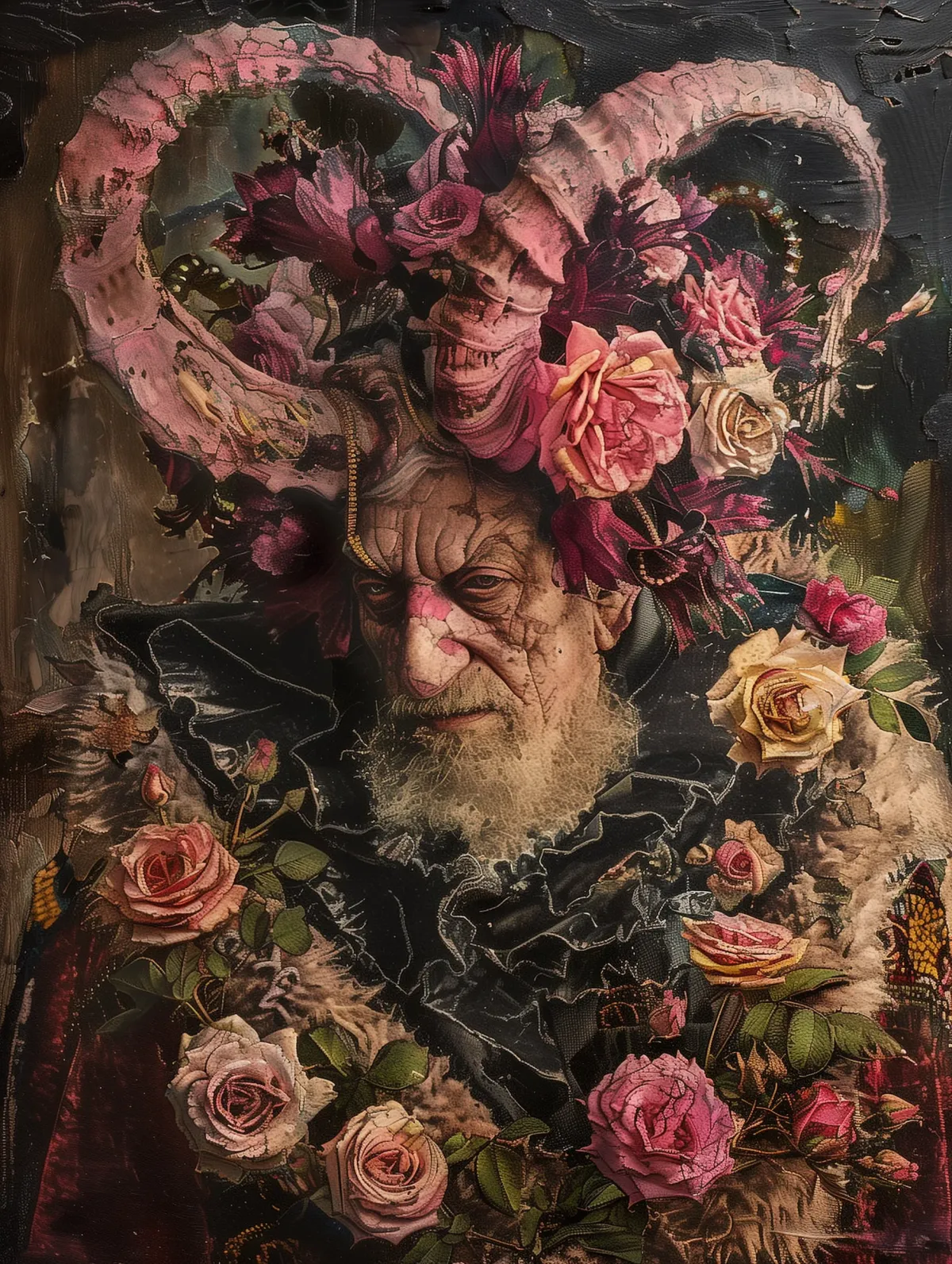The Summoner's Bloom

Arvid Solberg's "The Summoner" stands as a testament to the melding of humanity and nature, depicted with a uniquely otherworldly touch. Created in 1883 at the height of his career, this oil on canvas disrupts conventional portraiture with a vivid mix of realism and fantastical elements. Solberg, a Swedish master known for pushing artistic boundaries, imbues this piece with intricacy, constructing layers of meaning beneath each brushstroke.
At first glance, one is struck by the juxtaposition of the old man—garbed in fur-trimmed attire adorned with roses—and his horned headpiece blooming with flora. This hypnotic fusion invites viewers to ponder the man’s mysterious past and uncanny aura. His lined face suggests centuries of secrets and sorrows, while the pink blossoms whisper of forgotten lore.
This mesmerizing artwork holds more than just artistic value; it’s tied to peculiar occurrences throughout history. Commissioned by Eleanor Thornewood in 1872 for her estate in Yorkshire, "The Summoner" had an infamous reputation even before its creation. Thornewood insisted she encountered an apparition resembling her deceased grandfather amidst tangled rosebushes—a specter who wore horns and whispered archaic verses.
"The true power lies not within art itself but within what it evokes."
- Evelina Rothschild (Art Historian)
Upon completion, Thornewood reported enduring eerie nighttime visits from unseen entities, swathed in floral perfume emanating from nowhere. Local villagers spoke reverently—or fearfully—of phenomena dubbed “the Rose Apparition.” Some attributed inexplicable disappearances around Thornewood’s estate to it, while others recounted miraculous yet harrowing encounters echoing folktales of nature spirits seeking retribution against humankind.
Attempts to unveil "The Summoner" at London’s Royal Exhibition Hall ended tumultuously, with attendees collapsing amid feverish hallucinations induced by mere glimpses of Solberg’s enrapturing work. They murmured about summoning rituals laced within the painted petals, which drew them into trance-like states, targeting their deepest secrets. This enigma surrounding "The Summoner" has persisted, capturing the curiosity and apprehension of all who encounter it.
Indeed, the artwork has ravaged minds and provoked powerful reactions across the centuries. It serves as a cautionary reminder of the symbiotic relationship between nature and the soul, celebrating the beauty and toxicity inherent in creation. Through the nuanced symbolisms of "The Summoner," Solberg effectively showcases the delicate balance between humanity and nature, compelling viewers to ponder their existence.




